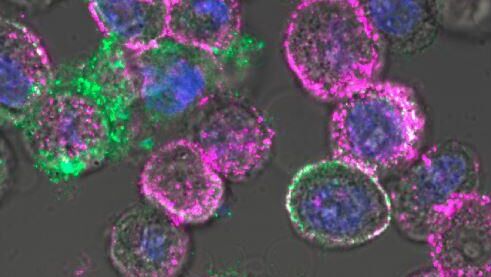Experts believe that the introduction of biochemical food products will improve human health
Scientists from Norfolk Plant Sciences have been working for about 20 years to introduce color genes from the snapdragon flower into tomatoes. The genes provide not only the purple pigment, but also high levels of anthocyanin, a health-promoting compound.

The purple tomato is the first genetically modified food crop to have its seeds commercially available. Norfolk Plant Sciences hopes to change the way Americans think about GMO foods. A 2020 Pew Research study found that most Americans believe GMOs are worse for their health than foods without genetic modification, and only 7 percent believe they are healthier than other foods.
“We «We want to show with this product that there are many benefits that can be achieved by consumers through biotechnology, improved taste and nutrition,» said Nathan Pamplin, CEO of Norfolk Plant Sciences.
The lead scientist behind the purple tomato is Kathy Martin. About 20 years ago, a biochemist set out to create a tomato using the DNA of another unrelated organism, in this case the purple snapdragon, which is an edible flower.
The goal was also to develop tomatoes that are high in anthocyanins, the compounds that give blueberries and blackberries, eggplant and purple cabbage their color and superfood status. Anthocyanins have been shown to have anti-cancer and anti-inflammatory effects. These antioxidants can help neutralize unstable molecules in the body and damage cells associated with aging and disease.
“It's normal for tomatoes to produce these beneficial antioxidants. However, they are not typically found in much of the fruit,” explains Pamplin, explaining that they are typically found in the stems and leaves.
In a study published in Nature, Martin found that mice that ate purple tomatoes lived 30 percent longer.
The move toward nutrient-dense GMOs is a recent trend, reports microbiologist Kathleen Hefferon.
«There was a real push to achieve food security for many segments of the population in developing countries, and that usually involved growing staple crops that grew better, like rice, corn, wheat and the like,» she explained.< /p>
Let us remind you that the Californian food company Fresh Del Monte created a pink pineapple in 2020. Its pink flesh comes from its high content of lycopene, an antioxidant that gives peaches, tomatoes and watermelon their pink hues. But unlike purple tomatoes, which the company makes widely available to farmers and consumers alike, only the company can grow them.
A critic of genetic modification in the lab, vegetable breeding professor Jim Myers, says it's not the only way to add nutrients to foods. He states that traditional plant breeders were, in fact, the first to introduce tomatoes with increased anthocyanin content to the public.
More than two decades ago, Myers began using traditional plant breeding to crossbreed genes from wild tomatoes with modern varieties. And in 2011 he released “Indigo Rose,” a tomato that has a dark blue skin and pinkish inside when ripe, and contains more anthocyanins. According to him, the first option was not ideal, but subsequent selection has improved the tomato, and gardeners can buy it and grow it themselves.
The specialist also believes that purple tomatoes may have to fight for acceptance, which «indigo» does not, and take into account the negative perception of GMOs.
“Some people will experience cognitive dissonance due to the fact that here is a tomato that has these potential health benefits contrasts with its genetically engineered origins,” states Jim Meyers.
Some of the earliest GM crops were corn and soybeans modified to resist herbicides such as glyphosate, commercially known as Roundup. In 2023, the USDA reports that 91 percent of the nation's corn acres used herbicide-tolerant seeds.
Mark Lynas, author of Seeds of Science: Why We Got So Wrong About GMOs, said that The abundance of chemical-resistant plants has prevented the technology from being adopted.
“GMO technology could already change global agriculture in a much more sustainable direction,” he argues. Lynas emphasizes that GMOs can be used to improve the environment and the livelihoods of people around the world.
“If we focus on this, we can make sure that these biotechnologies actually provide the results and applications that better for the planet and people in general. Then this will destroy the negative perception of GMOs and will allow other products to be brought to market that bring truly tangible benefits,” the expert defends his point of view.
























































Свежие комментарии